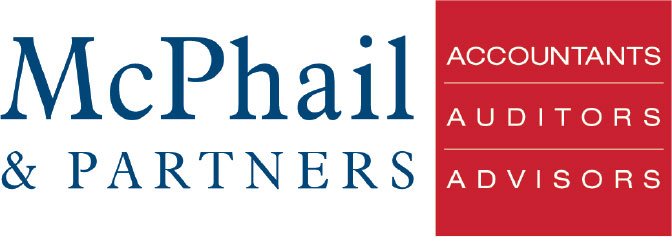What is the future of the Australian Tax System
 The Government’s discussion on tax reform has been released leaving little doubt that things will change – we just don’t know what as yet.
The Government’s discussion on tax reform has been released leaving little doubt that things will change – we just don’t know what as yet.
Simply titled 'Re: think' the tax paper released by Treasurer Joe Hockey at the end of February opens the forum for a discussion on Australia’s future tax system. There is a lot of ‘conversation’ in this document and no recommendations.
Comments on the discussion paper can be made up until 1 June 2015. This is a wide-open debate and if you have a view on how things should change you should make a contribution. The Government asks contributors to focus on ideas and how revenue is raised (not just how much). For more information, we have provided the links below:
• Tax Discussion paper
• Media Release: Time to ‘re:think our tax system
• Speech: Launch of tax discussion paper
Intergenerational report
The Australian Government, at least once every five years, produces an Intergenerational Report. It assesses the long term sustainability of current Government policies and how the changes to the Australian population would impact on economic growth, workforce and public finances over the following 40 years.
The Government has released a new Intergenerational Report that contains an analysis of the key drivers of economic growth (population, participation and productivity) and the impact that changes in those drivers has on the standard of living and public policy. While not aimed specifically at tax issues, it is likely to form part of the framework for any upcoming tax reform ideas.
For more information, you can download the report here:
• Treasury – 2015 Intergenerational Report
Privacy and TFNs
The Privacy Commissioner has issued a new privacy rule that deals specifically with TFNs. It replaces the Tax File Number Guidelines 2011.
Privacy (Tax File Number) Rule 2015 regulates the collection, storage, use, disclosure, security and disposal of an individual’s TFN information. A breach of the TFN rule would be considered an interference with privacy under the Privacy Act and unauthorised use may also be an offence under the Taxation Administration Act 1953, resulting in penalties which could include imprisonment or fines.
The information provided in this rule is likely to be relevant to all as they come into contact with TFNs on a regular basis. Some of the practical issues to be aware of under the TFN rule include:
• When requesting an individual’s TFN it is necessary to take reasonable steps to ensure that the individual is informed of the law which authorises the collection of the TFN and the purpose of collecting the TFN;
• The recipient of a TFN is allowed to inform the individual of their TFN (e.g., if a client forgets their TFN or can’t find their TFN records);
• Organisations need to take reasonable steps to ensure that all staff are aware of the rules regarding the collection and use of TFNs (e.g. staff training sessions).
For more information please click the link below:
• Privacy (Tax File Number) Rule 2015
If you or anyone you know would like more information about any of the information in this article and how it may affect you, please feel free to contact our office on 03 9898 9221 and we would be happy to answer any questions.
What to expect in 2015
Politics & taxes The last Federal Budget contained a series of severe cuts. Some of those have passed Parliament and become law while others are pending the outcome of negotiations with the minor parties, while others have died a slow and protracted death. Keeping track of what announcements are now law is difficult. Here’s a quick summary:
The last Federal Budget contained a series of severe cuts. Some of those have passed Parliament and become law while others are pending the outcome of negotiations with the minor parties, while others have died a slow and protracted death. Keeping track of what announcements are now law is difficult. Here’s a quick summary:
• Carbon Tax - abolished.
• Mining Tax - abolished along with the associated business initiatives such as the loss carry back rules, accelerated depreciation for motor vehicles and the instant asset write off.
• Superannuation guarantee (SG) - rephrased as part of the mining tax repeal. Now, the SG rate will remain at 9.5% until 1 July 2021.
• School kids bonus - was to be abolished as part of the mining tax repeal but is now means tested until 31 December 2016, before being abolished.
• 2% Debt tax - applies between 1 July 2014 until 30 June 2017 to those with annual taxable incomes over $180,000. In line with the debt tax, FBT rates will also increase from 47% to 49% from 1 April 2015 until 31 March 2017.
• Biannual indexing of fuel excise – introduced by stealth as a tariff proposal.
There are a series of other announced reforms that have either been rejected or stalled in the Senate. These include Family Tax Benefit reform, the $7 fee for GP visits, an increase in the pension age to 70, the 6 month wait for unemployment benefits, and deregulation of University fees. The Coalition’s paid parental leave scheme also seems to have faded from view.
The problem for the Government is that national debt is increasing – the mid year economic review revealed a $10.6bn blowout. Falling commodity prices and sluggish growth mean that the deficit is not going to be plugged any time soon.
To bring debt under control, the Government needs to cut spending somewhere or increase taxes. At this stage, it’s uncertain what and how this might be achieved. Cutting spending will rely on amending legislation passing the Senate with agreement by the minor parties - something the Government has not been able to achieve to date. On the tax front, the Government’s Tax White Paper is due out within weeks. The much anticipated review of the tax system is reported to outline the need to change the current system’s reliance on personal and corporate taxes including broadening the base and increasing the rate of GST, and changing how superannuation is taxed.
However, an increase in the GST requires the agreement of the States and as a result, all parties involved will be savaged by voters for any increase. If the Government acts on the reform measures set out in the Tax White Paper they have until mid 2016 to sell the concept to voters (according to the ABC’s Antony Green, the first possible date for a normal House and half-Senate election is 6 August 2016).
For more information about how these points may affect you, please feel free to contact Carol Tocchetto on 9898 9221.
Did you find this article interesting? Can you think of someone else who may also find it interesting? Please feel free to share it using the social media share buttons below, thank you.
The Comparison Trap: How to Enjoy (and Not Envy) the Success of Others

First thing in the morning, I check Twitter, only to have it list off for me all the ways I’ve already fallen behind. A colleague has released a new e-book. Two of my design heroes are announcing a collaborative project. One of my old college buddies has posted a video trailer for an upcoming online program, and she looks phenomenal, polished, charismatic, (I’m still in bed, bleary-eyed, and definitely not at my most telegenic.)
Am I really falling behind? Is anybody actually keeping score? Did any of these people post any of the updates with the intent of making me feel bad? Of course not. But if I’m not careful, it’s terribly easy to view my social media streams as a constant reminder of all the stuff I’m not doing, dreams I’m not fulfilling, and rooms I’ve failed to decorate in a Pinterest-worthy manner.
This isn’t a social media problem. It’s a comparison problem.
There isn’t a single thing about Twitter – or any of the other social media platforms I use – that’s designed to make me ask how I’m measuring up. That’s all me – an automatic, internal mechanism. It’s part ego (“But what does this say about me?”), part creative drive (“What more am I capable of?”), and part deep soul yearning (“How can I make an impact, leave a legacy, and matter?”).
And I know it’s not just me. I’ve spent the past year collaborating with leadership coach Tanya Geisler on researching how comparison works, what it costs us, and what it can teach us – and we’ve discovered that it runs rampant among just about every creative, growth-oriented person we know. In our comparison-soaked culture, it’s hard to avoid looking around at what other people are doing with their short time on earth, and slipping (often unconsciously) into “How am I stacking up?” mode. Here’s what we learned:
1. Don’t compare your insides to someone else’s outsides.
The first time I heard this excellent, if hard-to-implement, advice, I was suffering from a terrible case of envy. Some competitor or other had achieved an inspiring degree of success and I was complaining to a mentor about how unachievable it seemed to me. Her warning took me aback: Look, she told me. You have no idea what it took for them to get there. Don’t act like this was unearned, effortless, or pure dumb luck. And for Pete’s sake, don’t go thinking that because you read the press release, you have a single clue about what’s really going on behind the scenes.
2. You have no idea what it took for them to get there. Don’t act like this was unearned, effortless, or pure dumb luck.
She was absolutely right. I knew better, yet in the moment that I’d heard the news, I fell prey to reactive thinking and over-simplification. Because it’s much easier to look at someone “up there” and envy what they’ve got than it is to ask the tougher questions:
o What do they have that I wish I had?
o What do I admire about them? What are they modeling for me?
o What have they done to get where they are today?
o How does this relate to my own values?
When we reflect on these questions, we shift immediately out of comparison mode (that whole comparing-our-insides-to-their-outsides) and turn inwards, to face the heart of the matter: our own desires and fears.
Transform comparison into celebration
Admiration and envy are responses that point us toward what we value most. And when we become aware of what we value, we are much better positioned to create a life that’s richly satisfying.
Admiration and envy are responses that point us toward what we value most.
If you notice yourself admiring people who take creative risks, bring your full attention to the part of you that wants to dare more greatly. If you catch yourself envying the folks in your circles who are at ease with self-promotion, take some time to reflect on how you might share your triumphs in a way that feels totally YOU. Heck, if you’re obsessing over tennis players’ forearms, it could be a sign that you’re ready to revamp your fitness regime. You get the idea.
Use the Success of Others As a Mirror
Comparison can be a dark, stuck place, but only if you let it be. There’s gold to be found in your comparison habit, if you’re willing to look for it. The light we see in others can help us see our own – and appreciate it.
So the next time you catch yourself admiring or envying someone’s success, gifts, or particular brand of radiance – be it in a professional context, a personal one, or simply perusing magazine covers – take a moment to consider:
1. What qualities in them inspire me?
2. Where do I currently embody these qualities?
3. How might my expression of these qualities differ from theirs?
4. What can I learn from my desire to embody these qualities more fully?
Your Twitter feed may never look quite the same.
Article written by Lauren Bacon @laurenbacon
Client Alert September 2013
The Client Alert report is a monthly newsletter distributed to our clients to keep them up to date with the tax system and small business issues.
The client alert provides information on tax rulings and changes, FBT, PAYG, GST, superannuation and lots more.
Australia's Top 50 Financial Planners Announced for 2012
We are pleased to inform you that David Graham has once again qualified for a position in the Masterclass for Financial Planning 2012 as determined by “The Australian Financial Review Smart Investor” magazine and placed in the Top 50 financial planners in Australia.
The Masterclass awards were first introduced in 1998 and are carried out by Smart Investor magazine to provide investors and clients with a guide to the top planners in the country. Applicants must not only be licensed to provide financial advice but also be either: a Certified Financial Planner; Certified Practicing Accountant; or a member of the Institute of Chartered Accountants.
Assessment is based on a rigorous 60 minute online exam which is set by experts in the financial services industry. The test gives planners the opportunity to demonstrate their technical expertise in areas like tax, superannuation (including SMSFs), social security, asset allocation, investment strategies, financial maths and estate planning.
More information about the award can be found on pages 23-29 of the February 2012 edition of “Smart Investor” magazine.
You may recall that Anne Graham was a finalist in the AFA Adviser of the Year Award late last year. We are extremely well positioned to continue meeting your financial planning needs in 2012 and beyond and the recognition awarded to us by our peers will give you confidence that you are in capable hands.
Anne Graham wins Victorian FPA CFP® Professional Best Practice Award
We are absolutely delighted to announce that Anne Graham has been awarded the 2013 Victorian FPA CFP® Professional Best Practice Award.
The FPA’s annual Awards recognise Australia’s best financial planners who deliver exceptional qualified and trusted financial advice using the highest standard of ethics, practice standards and professional conduct in the country. CEO of the FPA, Mark Rantall, said that the Best Practice Awards also serve as an important symbol of excellence for consumers seeking qualified financial advice:
“These awards recognise the best of the best. FPA members comply with some of the highest financial planning standards on a global stage. These Award winners have not only complied with the FPA Code, but in so doing have offered a considerable contribution to the profession through community involvement, mentoring and support to their local FPA Chapter.
“Our profession has been through a period of tremendous change in recent years and has made significant strides in advancing the global standing of the profession. These planners have, in spite of any interruption to business, persisted for their clients’ best interests.”said Rantall.
This is a great achievement that demonstrates the high quality advice that Anne provides to our clients.
For more information regarding the award, please visit the FPA website: http://www.fpa.asn.au/default.asp?action=article&ID=23058
What does Female Excellence look like in 2012?
Excellence in advice is more than just providing quality advice, it’s about going over and beyond your call of duty to provide the support and living tools people need – often to survive.
For female excellence in advice, the role doesn’t end as the client walks out the door, it’s an ongoing relationship of advice, and education that makes a difference not just on a client level, but on an industry level.
This award doesn’t just represent great client/adviser achievement, its represents a step forward in diversifying an industry. See three of the contenders for this year’s Female Excellence in Advice Awards via the link below:
http://www.adviservoice.com.au/2012/09/what-does-female-excellence-look-like-in-2012-like-this/
Latest Tax Table
Lorem ipsum dolor sit amet, consectetur adipiscing elit. Donec quis vulputate mauris. Proin nec tortor varius, elementum libero et, sollicitudin purus. Nullam id blandit libero. Fusce eleifend aliquet urna eget bibendum. Donec dignissim sit amet urna id ornare. Maecenas mollis neque vel ligula faucibus, vel pulvinar augue tempor. Maecenas mollis est quis nisl dignissim, sed imperdiet enim porta. Nam hendrerit ligula ut mi pharetra laoreet. Duis nunc felis, aliquam vel semper vitae, pellentesque sit amet nisl.
Tax Rates 2012-13 & 2013-14
| Taxable income | Tax on this income |
| 0 - $18,200 | Nil |
| $18,201 - $37,000 | 19c for each $1 over $18,200 |
| $37,001 - $80,000 | $3,572 plus 32.5c for each $1 over $37,000 |
| $80,001 - $180,000 | $17,547 plus 37c for each $1 over $80,000 |
| $180,001 and over | $54,547 plus 45c for each $1 over $180,000 |
Tax Rates for 2014-15
| Taxable income | Tax on this income |
| 0 - $19,400 | Nil |
| $19,401 - $37,000 | 19c for each $1 over $19,400 |
| $37,001 - $80,000 | $3,344 plus 33c for each $1 over $37,000 |
| $80,001 - $180,000 | $17,534 plus 37c for each $1 over $80,000 |
| $180,001 and over | $54,534 plus 45c for each $1 over $180,000 |





